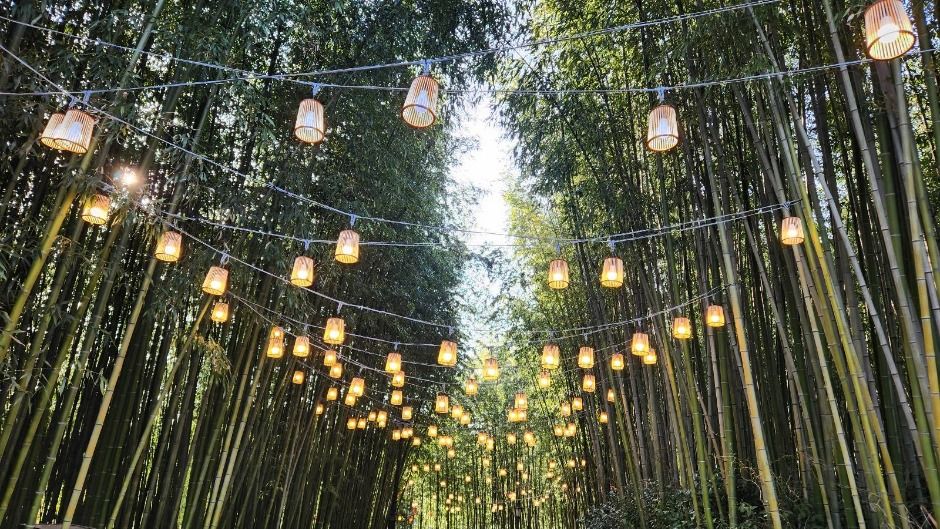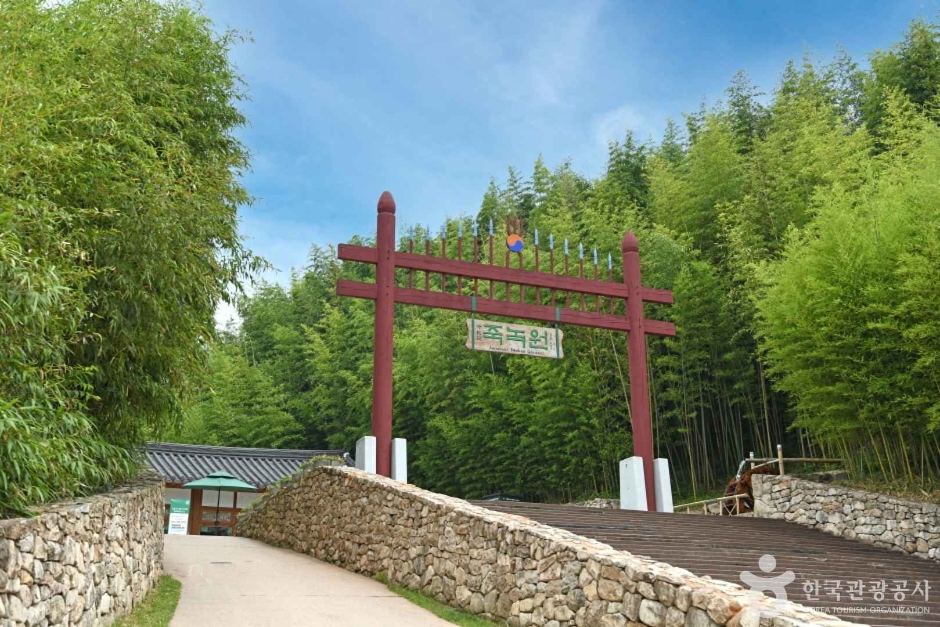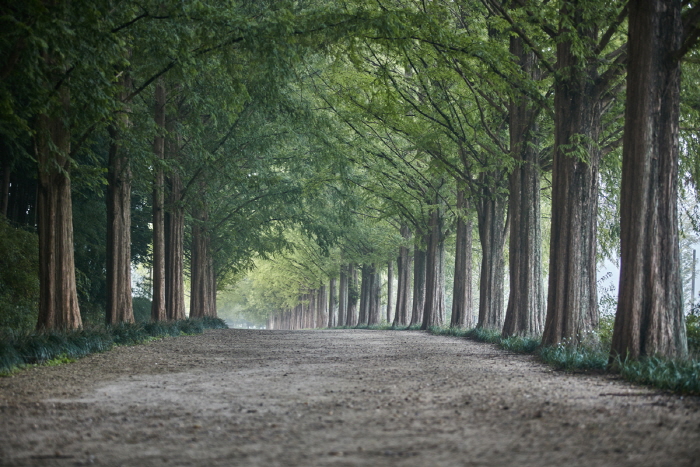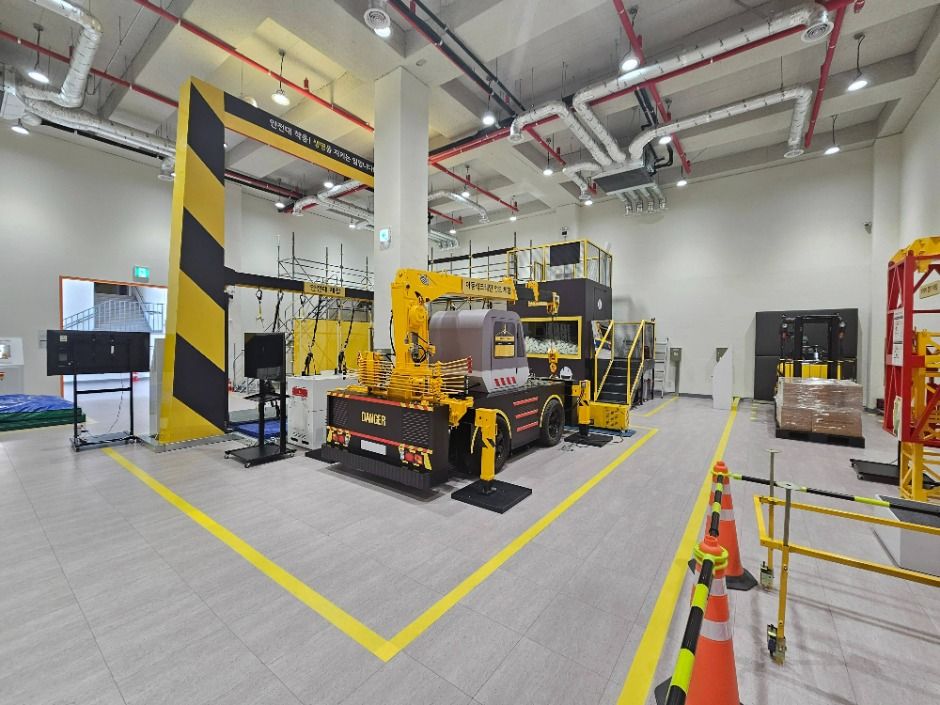Damyang Bamboo Festival (담양대나무축제)
17.8Km 2025-07-11
134 Jungnogwon-ro, Damyang-eup, Damyang-gun, Jeollanam-do
+82-61-380-3152
In Damyang, a town where bamboo grows abundantly, there used to be a day when villagers gathered to plant bamboo, known as the Day of Jukchwi (bamboo planting day). This tradition has evolved into an annual festival celebrated in May since the Goryeo Dynasty. The festival takes place around the famous bamboo forest, Juknokwon, and the natural monument forest, Gwanbangjerim Forest. Various bamboo-related activities are available, such as making bamboo kites, shooting bamboo water guns, and riding bamboo rafts and canoes. A stroll through the bamboo forest, which emits phytoncides and negative ions, offers a relaxing charm during the festival. Visitors can also enjoy Damyang’s local food on the lawns, watch performances, and participate in various events, immersing themselves in the celebration of Damyang and bamboo.
◎ Day of Bamboo Planting
May 13 on the lunar calendar is a good day to plant bamboo. It is recommended that bamboo shoots be planted during the rainy season, as bamboo loves water.
Juknokwon (Bamboo Garden) (죽녹원)
17.9Km 2024-12-02
119 Jungnogwon-ro, Damyang-gun, Jeollanam-do
+82-61-380-2680
Juknokwon in Damyang is a bamboo forest cultivated by the town of Damyang. This bamboo forest, at approximately 160,000 ㎡ in size, was formed in May 2003. The rock steps and soft breeze blowing between the bamboo trees provide relief from daily stress. Try bamboo leaf tea for a perfect end to one's visit.
Chojeom Stay [Korea Quality]스테이 초점[한국관광 품질인증]
18.1Km 2023-05-23
33-6 , Dangga-gil, Naju-si, Jeollanam-do
+82-10-4892-3473
Chojeom Stay is a hanok guesthouse in the innermost part of a small village in Naju, Jeollanam-do. The old house, which has been renovated, comprises a living room, kitchen, bedroom space and a raised-floor numaru where guests can enjoy a quiet hour while brewing tea. The spacious yard contains an outdoor fire place that creates a sentimental time, and an open-air tub where you can bathe in warm water while cool breezes rustle the trees. The outdoor shoes lined up by the side of the yard are somehow touching.
Damyang Meta Provence (담양 메타프로방스)
18.2Km 2023-01-17
2-17, Gipeunsil-gil, Damyang-gun, Jeollanam-do
+82-61-383-1710
Meta Provence is a tourist complex located in Damyang, Jeollanam-do, which attracts approximately 5 million tourists a year, and is located right next to Damyang Metasequoia-lined Road, once selected as one of Korea’s most beautiful tree-lined roads. It has an atmosphere just like that of the French city of Provence, a famous vacation destination. Meta Provence consists of fashion streets, design handicraft workshops, commercial spaces, banquet halls and many other open spaces where culture, art and business coexist to provide great experiences for not only individual tourists but also families and groups, and, through diverse and differentiated high-quality services, it strives to provide special memories and new experiences to all visitors.
Damyang Metasequoia-lined Road (담양 메타세쿼이아길)
18.4Km 2025-01-09
12, Metasequoia-ro, Damyang-gun, Jeollanam-do
+82-61-380-3149
Damyang Metasequoia-lined Road is one of Korea's most beautiful paths. Metasequoia trees were planted along the street in the early 1970s by the Ministry of Internal Affairs after National Road 24 was rebuilt. At that time, the saplings were only 3 to 4 years old and their branches stretched sparsely out into the sky; now, the trees have grown so high that they seem to block out the sun. Thanks to these stately trees, in 2002 the Korea Forest Service selected the boulevard as one of the most beautiful roads in Korea. The 8.5-kilometer-long boulevard is one of the most popular driving routes in Korea, especially during summer when the trees’ lush green leaves are at their x_height of beauty.
Damyang Safety Experience Training Center (KOSHA) (담양 안전체험장(안전보건공단))
19.8Km 2025-07-30
219 Byeongmok-ro, Geumseong-myeon, Damyang-gun, Jeollanam-do
Damyang Safety Experience Training Center offers programs to raise safety awareness by providing hands-on experiences of accidents that can occur in daily life. There are around 36 experience programs with a focus on the prevention of accidents such as fire, entrapment, and electric shock, as well as first aid. The VR zone at the center offers a vivid experience of various accidents and accident prevention measures, making the training more engaging. The educational programs are available for people of all ages.


![Chojeom Stay [Korea Quality]스테이 초점[한국관광 품질인증]](http://tong.visitkorea.or.kr/cms/resource/05/2949005_image2_1.jpg)



 English
English
 한국어
한국어 日本語
日本語 中文(简体)
中文(简体) Deutsch
Deutsch Français
Français Español
Español Русский
Русский